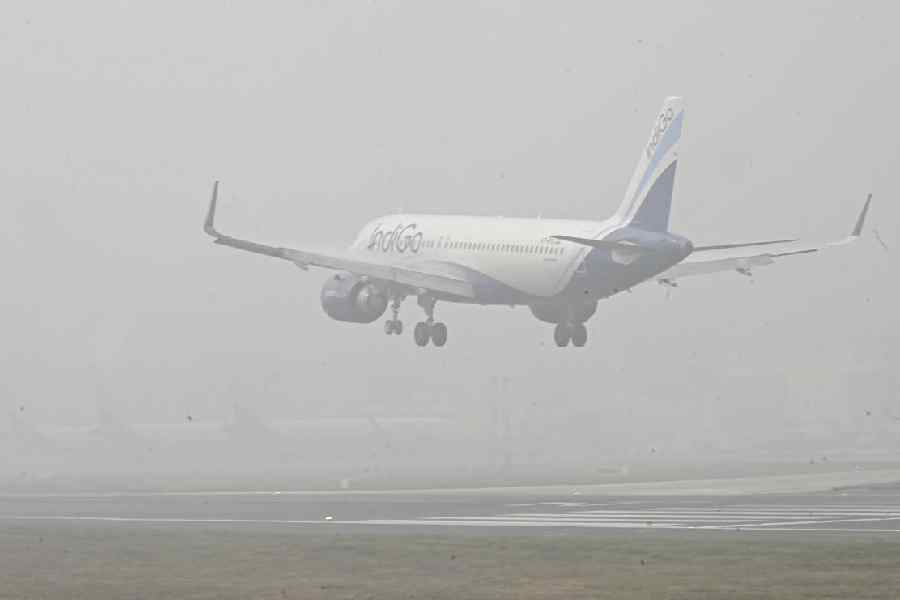Two bar-headed geese tagged with solar-powered GSM-GPS transmitters in Bihar’s Nagi Dam Bird Sanctuary have reached the wetlands of Tibet after more than one-month long journey, state environment, forest and climate change minister Sunil Kumar said.
The Bombay Natural History Society (BNHS) deployed solar-powered GPS-GSM tags (transmitters) on these two bar-headed geese — named Gagan and Vayu — at the Nagi Dam Bird Sanctuary in Jamui district on February 22. This was the first time transmitters were deployed on bar-headed geese, the highest-flying migratory birds, to track their precise movement.
“The two geese will provide critical data on migration routes, stopover sites, and their behavioural patterns. It will help us further strengthen wetland conservation strategies. This is the first time such tracking technology has been used on migratory birds in Bihar,” the minister told PTI.
He added: “According to the latest update, both of them are moving separately but are in the wetlands of Tibet. While Gagan is on the northwest side of the wetland complex — Nagarze county and Yamzho Yumco — Vayu is in South Tibet.”
Kumar said the data will also be helpful in understanding the geese’s journey from non-breeding areas to their breeding grounds in the Central Asian Flyway.
“As these bar-headed geese follow the Central Asian Flyway, it was decided to track the movement of this specific species. Also, the local movement of this species, in and around the Nagi Dam will be known. This information will play a vital role in strengthening wetland strategies,” the minister said.
The Nagi Bird Sanctuary is a 200-hectare wetland in Bihar’s Jamui district.
This wetland is a prime location for migrating birds in the winter season from October to April. It was declared a bird sanctuary in 1984. It has also been designated as an Important Bird Area (IBA) by Birdlife International. Migratory birds such as the Bar-headed Goose, Greylag Goose, Northern Pintail, Red-crested Pochard, Steppe Eagle, and Taiga Flycatcher, among others, flock to the sanctuary after travelling from the Himalayas, Europe, North Asia and even from the Arctic Circle,” Kumar said.
Apart from migratory birds, a wide variety of resident birds like the Ashy-crowned Sparrow Lark, also inhabit the sanctuary and its surroundings throughout the year, he added.
Explaining the route covered by Gagan and Vayu, principal chief conservator of forests Prabhat Kumar Gupta told PTI: “Bar-headed goose have a breeding range that stretches from Mongolia, south through Russia and Western China to Tibet and as far west as Kyrgyzstan. They migrate over the Himalayas to spend the winter in parts of South Asia (from Assam to as far south as Tamil Nadu). It is one of the species that exclusively migrates along the Central Asian Flyway (CAF).”
Gupta said both Gagan and Vayu left the Nagi Dam and reached Nakti the very next day and were moving between the areas near Bhimbandh and a little westward to the place Naukadih.
“On March 6 at 10.54am, Vayu embarked on its journey, soaring to an altitude of 4,898 metres as it traversed the Indian border, travelled between Bhutan and Sikkim and entered into the Tibetan Plateau. It was flying at a speed of 59-74km. On March 9, it took a circular route, probably exploring the suitable habitat for its stay.
“Between February 22 to March 6, Gagan remained active at Nagi Dam, where it was tagged (24.81°N, 86.40°E). On March 7 at 08.28 hours, it left Nagi Dam and reached the sandbars in the Ganges near Bhagalpur, which is 80km aerial distance,” Gupta said.
After spending 36 hours there, in two locations in the river Ganges, it took a flight to reach Nepal. Unlike Vayu, Gagan took a lower-altitude migration route, maintaining a steady northward movement without climbing to extreme heights to reach the Terai region of Nepal. Gagan’s highest recorded altitude was 640 metres so far, Also it was flying at the speed of 56-57km, said Gupta.
Now both are in Tibet, he added.











